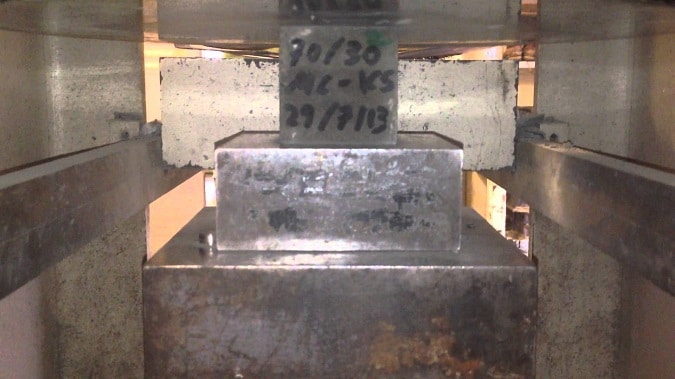Ho to determine Compressive Strength of Mortar -Mix Ratio and Cube Test
Compressive strength of mortar is determined by using 2 inch or 50mm cubes as per ASTM C109 / C109M – Standard Test Method for Compressive Strength of Hydraulic Cement Mortars.
Mortar is a combination of cement, sand mixed with water. It is used for masonry works such as brick masonry and stone masonry and for plastering walls, columns etc.
Common mix ratio of mortar used in masonry works are 1:3, 1:4 and 1:6 of cement to sand ratio. For important masonry structures such as brick walls, 1:3 ratio is used.
Why Compressive Strength Test of Mortar is Important?
Generally masonry structures are constructed as load bearing. For example, load bearing walls, load bearing masonry columns etc. are constructed for residential and other masonry buildings. For a masonry buildings, foundations are also constructed with brick masonry.
For a load bearing masonry construction, it is important to know the compressive strength requirement of masonry to withstand the load subjected on it. A masonry wall is subjected to compressive loads from floors above it and should have sufficient strength to withstand it. So, masonry compressive strength should be enough to support the loads on wall.

Determination of Compressive Strength of Mortar
To find the compressive strength of standard cement sand mortar cubes, following are the apparatus and procedures of the test.
Apparatus
7.06cm cubes moulds (50cm2 face area), apparatus for gauging and mixing mortar, vibrator, compression testing machine etc.
Procedure for Compressive Strength of Mortar
Take 200gm of cement and 600gm of standard sand in the mix ratio 1:3 by weight) in a pan.
The standard sand shall be of quartz, of light, gray or whitish variety and shall be free from silt. The sand grains shall be angular, the shape of grains approximating to the spherical form, elongated and flattened grains being present only in very small quantities.
Standard sand shall pass through 2 mm IS sieve and shall be retained on 90 microns IS sieve with the following particle size distribution.

Mix the cement and sand in dry condition with a trowel for 1minitues and then add water. The quantity of water shall be (p/4+3)% of combined weight of cement and sand where, p is the % of water required to produce a paste of standard consistency determined earlier.
Add water and mix it until the mixture is of uniform colour. The time of mixing shall not be < 3 minutes & not > 4 minutes.
Immediately after mixing the mortar, place the mortar in the cube mould and prod with the help of the rod. The mortar shall be prodded 20 times in about 8 sec to ensure elimination of entrained air.
If vibrator is used, the period of vibration shall be 2 minutes at the specified speed of 12000±400 vibrations /minutes. Then place the cube moulds in temperature of 27±2oC and 90% relative humidity for 24 hours.
After 24 hours remove the cubes from the mould and immediately submerge in clean water till testing. Take out the cubes from water just before testing. Testing should be done on their sides without any packing.
The rate of loading should be 350 kg/cm2/minute and uniform. Test should be conducted for 3 cubes and report the average value as the test result for both 7day and 28 day compressive strength.
Result of Mortar Cube Test
Compressive strength at 7 days =……….N/mm2
Compressive strength at 28 days =……….N/mm2
Calculations of Compressive Strength of Mortar
Range Calculation
Allowable compressive stress=
Area of cross section of cubes=50cm2
Expected load=stress x area x f.s=
Range to be selected is ………..
Compressive Strength of Mortar
Breaking load= ……………….
Area of cross section=………………….
Compressive strength=……………………
Comments
A slab was designed to cast by M25 grade of concrete but we can’t find out the strength of the concrete in the semi-solid state.
Even though we do some preliminary test to ensure the quality of the concrete but that cannot define its strength.
A certain quantity of concrete shall cast as a cube while pouring time of the concrete to find the compressive strength of concrete.
Source Compressive Strength of Concrete Cube Test
Box Compression Tester | Testing Instruments